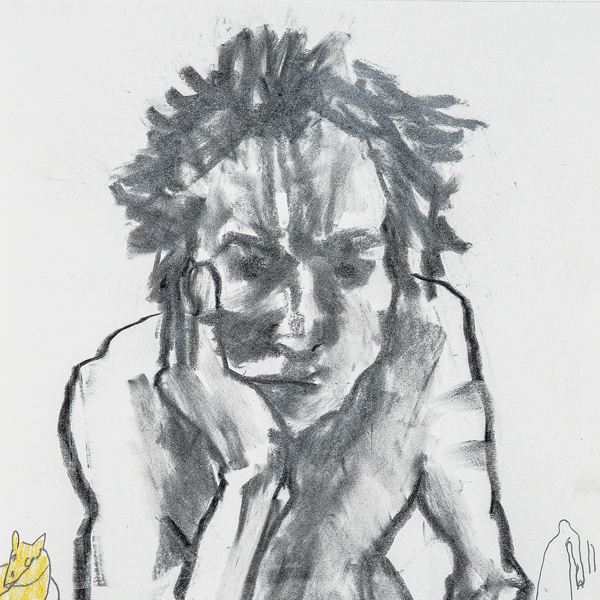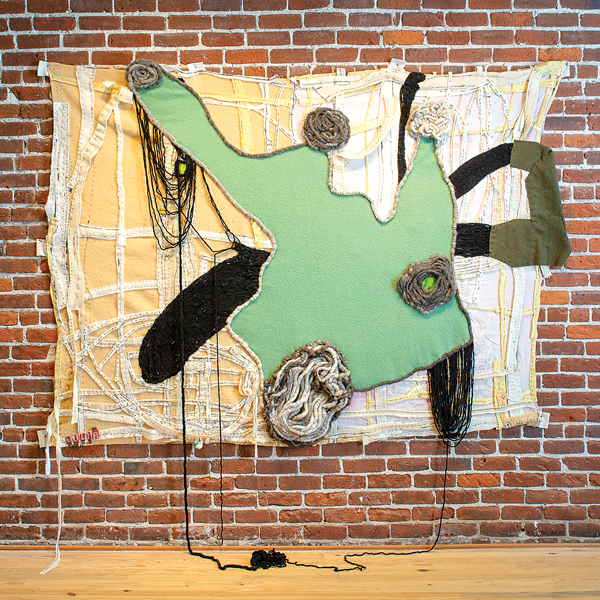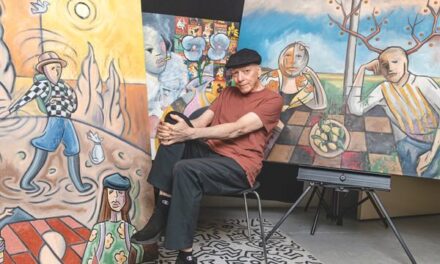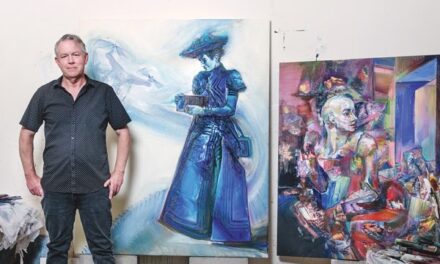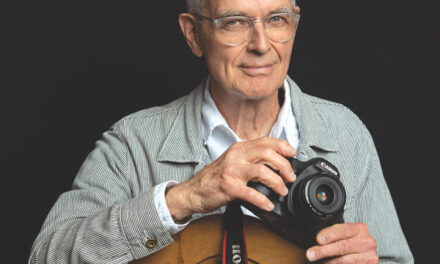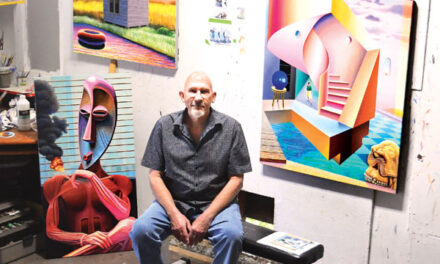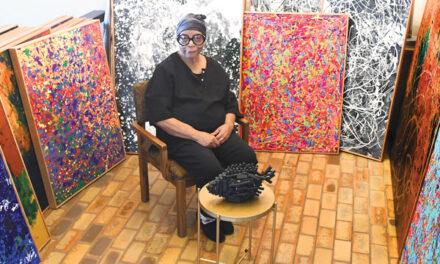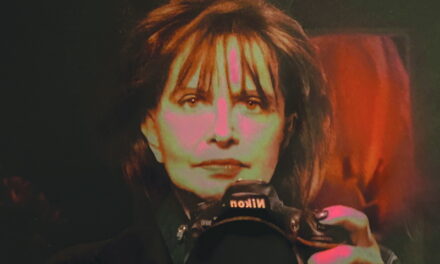When I ask artist Julia Couzens how she comes up with ideas, her answer is swift. “I don’t lead the work, the work leads me,” she says.
“I hold the materials in my hand and think, what am I noticing? What is triggering a response in me? The art really comes out of the process of how the materials evolve organically in the studio. It’s not an intellectual practice—the intelligence comes from paying attention to how I respond to what’s in front of me. I’m looking for signs of life.”
In an expansive career, Couzens works with watercolor, mixed plastics, tape, twine, textiles and more. Her subject matter ranges from the sensual to the surreal—including body parts, DNA, spider webs and linear energy. A critic once referred to her abstract sculpture as “visual piñatas.” But Couzens is clear that art is not all fun and games.
“People think, you’re an artist, oh, what fun. But for serious working artists, it isn’t about fun,” she says. “It’s about discovery and having the belief in yourself and the courage to try and understand what your truth is. Sure, there are things about it that are fun, but would you say a surgeon is having fun? It’s hard work. It’s hard to not know and stay in a place of not knowing and have the faith in yourself that you’re going to be able to get to solid ground.”
Her faith pays off. Couzens has received numerous grants and fellowships. Her work is exhibited globally in museums and galleries, including the 2019 Cheongju Craft Biennale in South Korea. Many institutions have collected her work, including the Fine Arts Museum of San Francisco, Butler Institute of American Art, Crocker Art Museum, Manetti Shrem Museum at UC Davis and Yale University Art Gallery.
Despite the notoriety, Couzens never stops growing. “The biggest challenge and most important character trait to making art work is to remain teachable,” she says.
As a child, she knew she was going to be an artist due to an innate creativity and encouragement from a “fantastic” art teacher. She was surrounded by artists thanks to her mother’s job as the founding editor of “West Art,” the West Coast’s first publication dedicated to contemporary art. Because of that exposure, Couzens knew she needed time before entering the art world.
“I recognized the force of (the artists’) personalities, and while they were very compelling, I knew I wasn’t ready to jump into that competitive, aggressive social dynamic,” Couzens says.
Instead, she got her undergraduate degree in English and philosophy and waited until she had “acquired a couple of barnacles” to attend the California College of Arts and Crafts (now California College of the Arts) in Oakland.
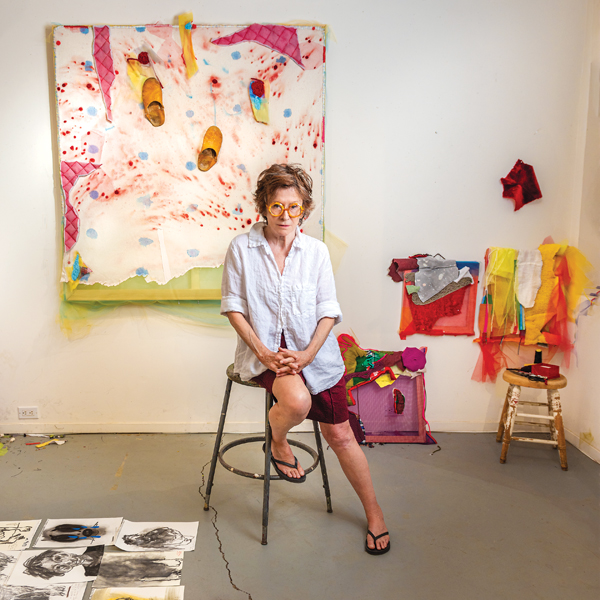
After her husband’s job landed them in Sacramento in 1977, she took classes at Sacramento City College, which led to a master’s in fine arts at UC Davis in 1990.
“I’ve always been kind of out of synch in my timeline—I didn’t just smoothly go from point A to point B,” says Couzens, who works out of a studio on the ground floor of her house on Merritt Island, outside Clarksburg, and a studio in downtown Los Angeles. “It’s been good, actually. It’s meant I haven’t gotten calcified.”
While Couzens recognizes she was lucky to arrive when she did, she laments the region doesn’t support up-and-coming artists the way it used to. With no active donor base, critical discussion or consistent media, she’s worried young artists will leave Sacramento for greener pastures.
“We need to shine a light on young artists and the gallery spaces that are sprouting up here,” she says. “But we also need critical mass. We need enough people paying attention and we don’t have that right now. Young artists are a precious resource. They’re the future.”
Check out Couzens’ upcoming solo exhibition, Me and My Other Me’s, at b. sakata garo gallery at 923 20th St. in October.
For information, visit juliacouzens.com.
Jessica Laskey can be reached at jessrlaskey@gmail.com. Follow us on Facebook, Twitter and Instagram:
@insidesacamento.



